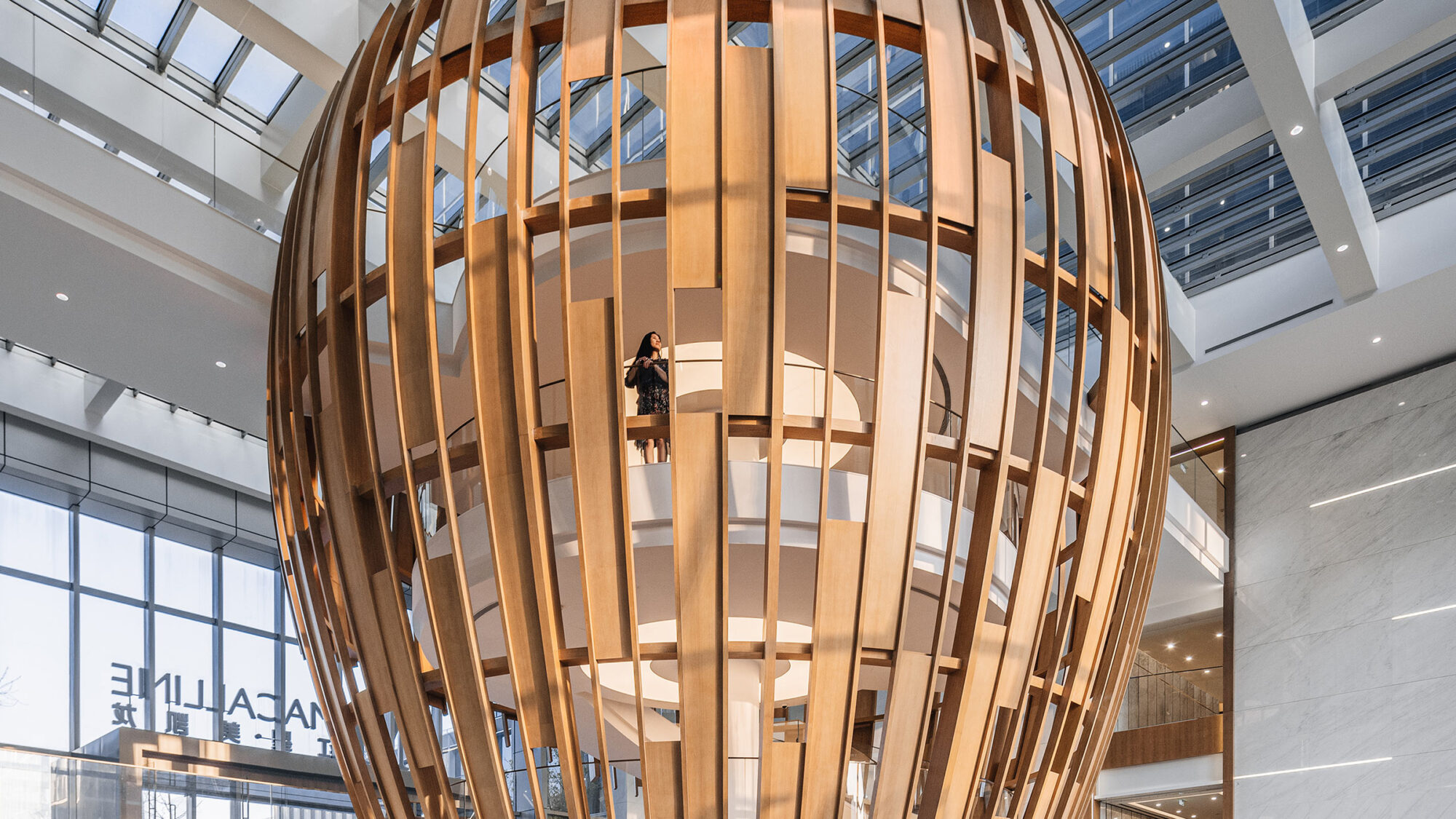

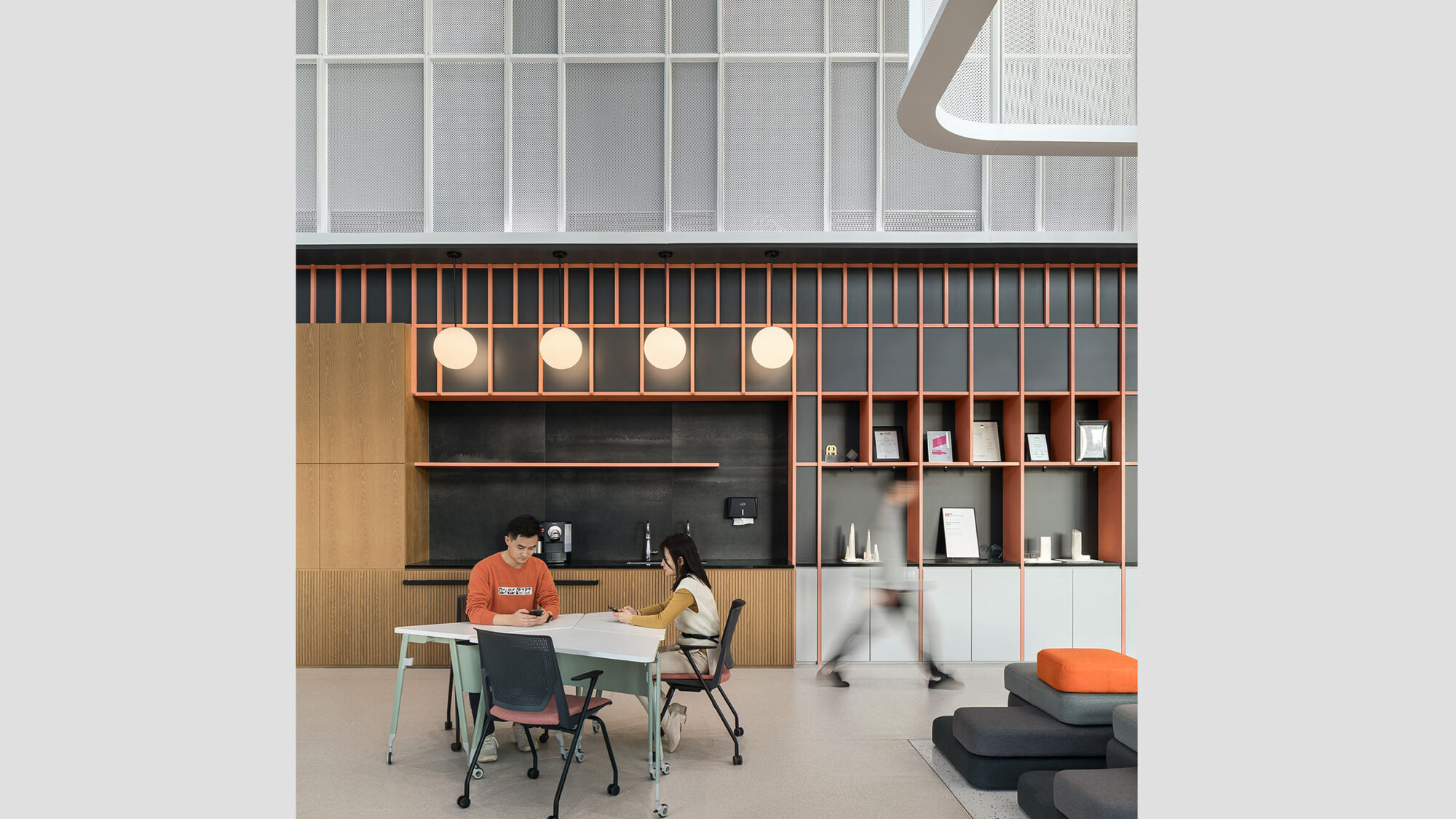


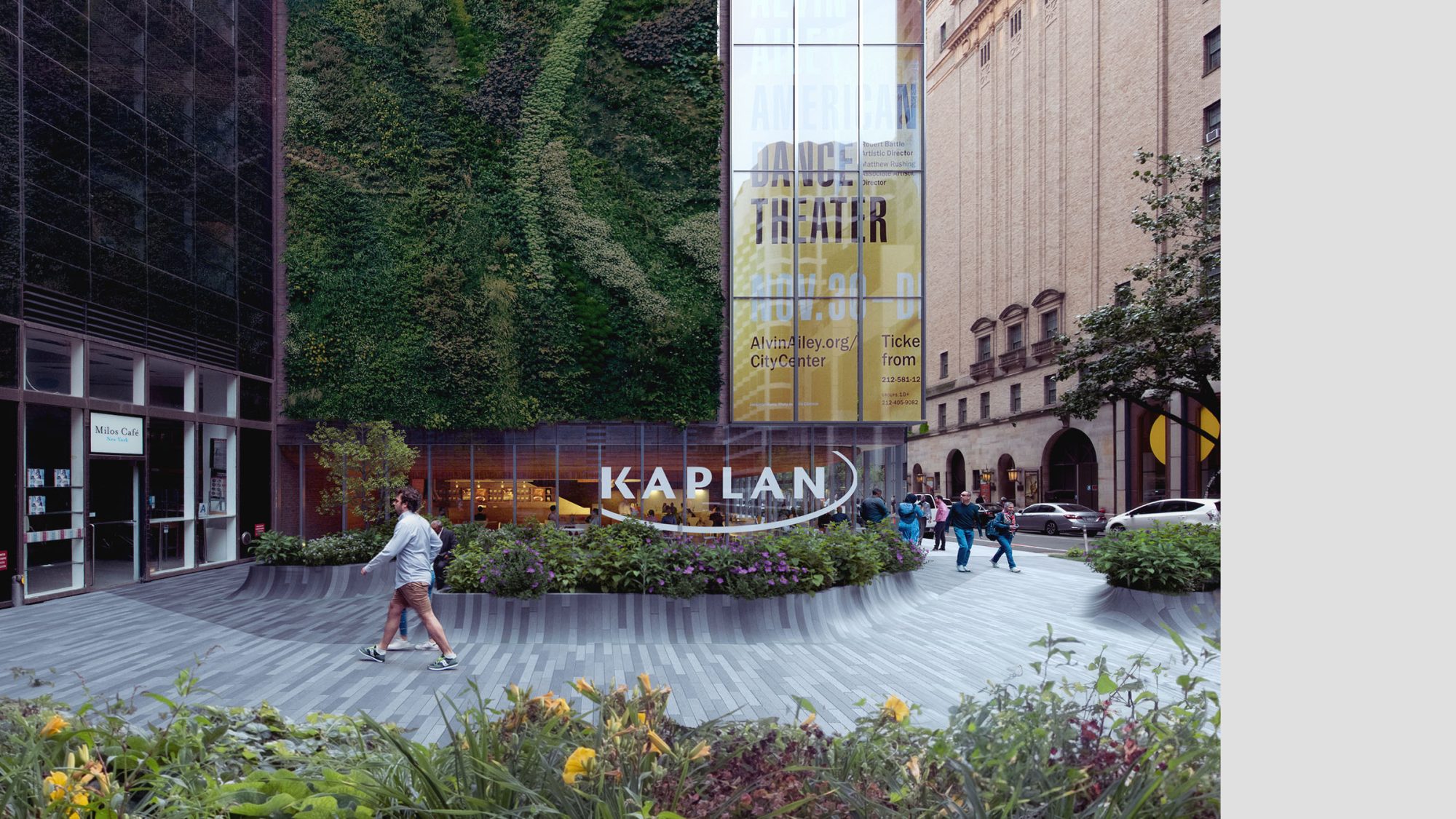
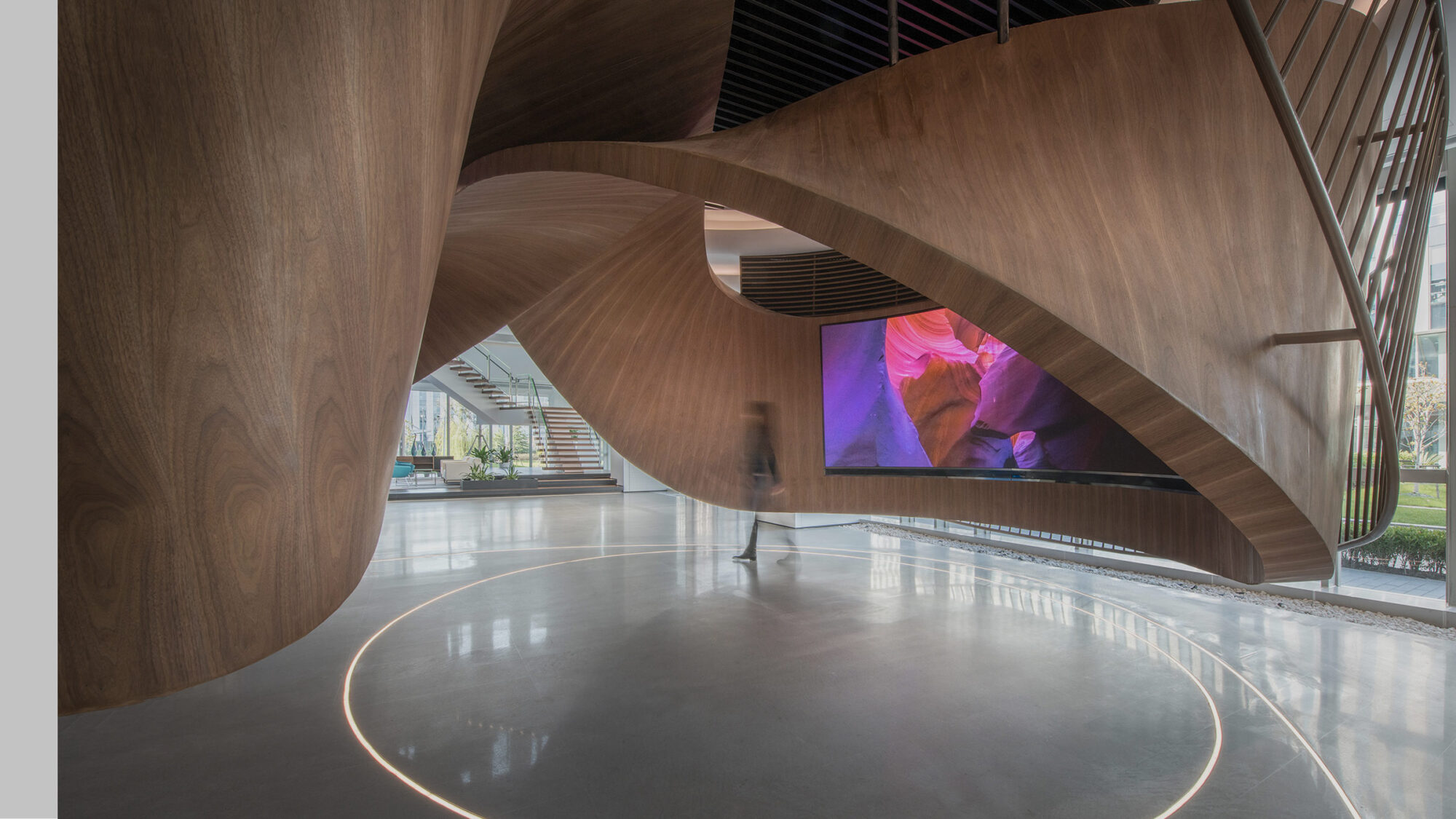
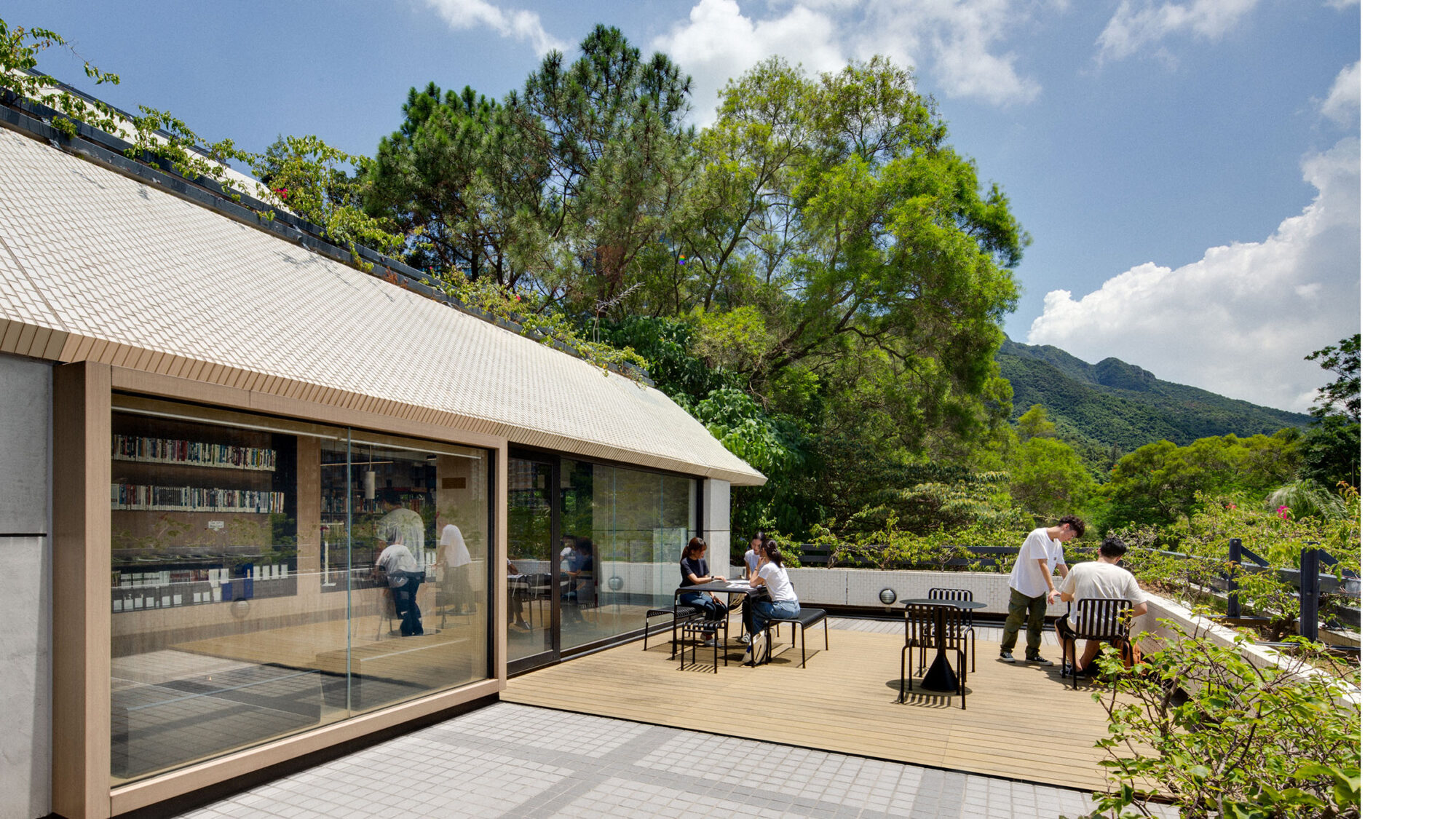


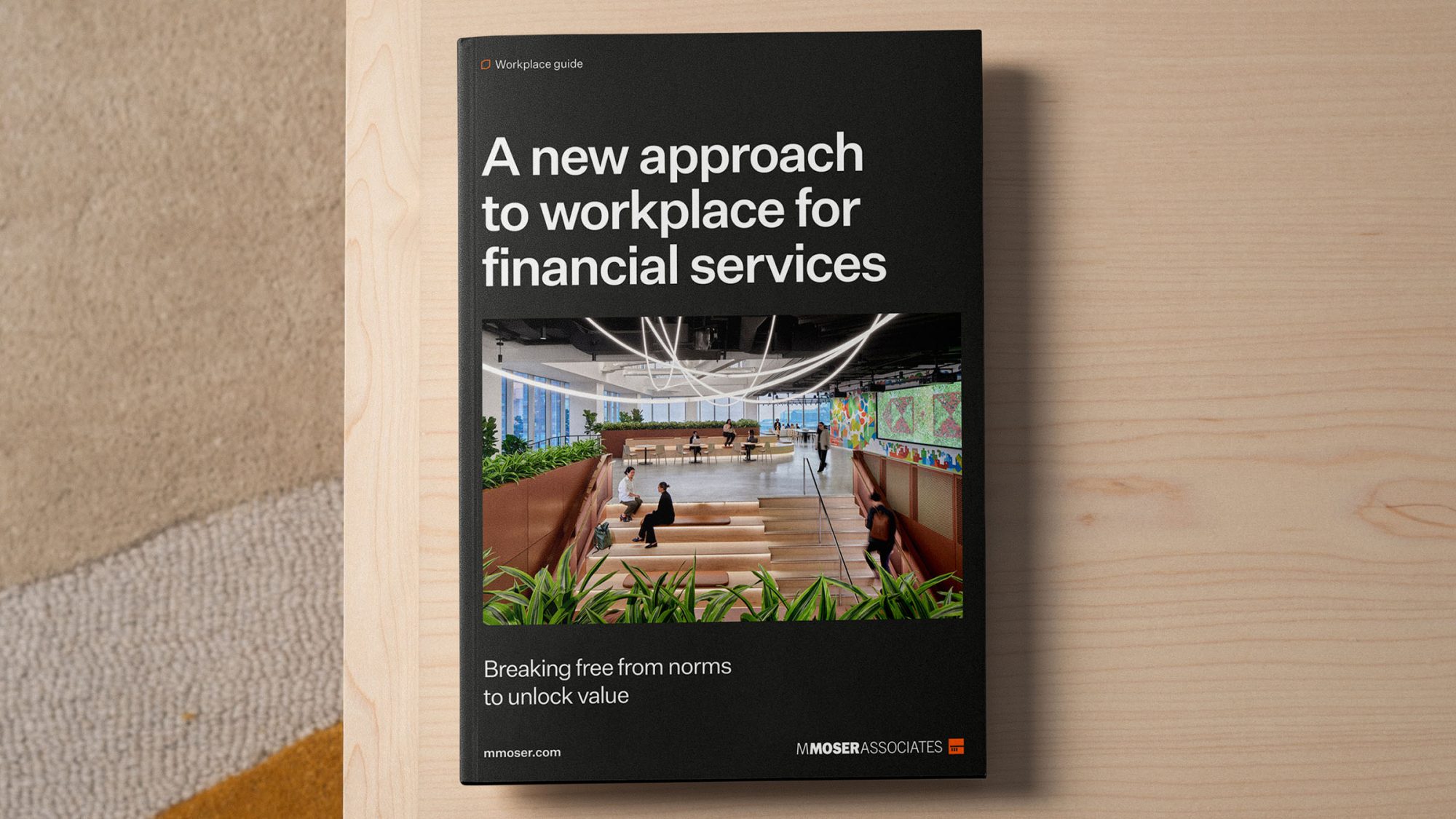
What does the new financial workplace look like?
RTO. Hybrid work models. Advanced technology. Bold sustainability targets. And people who expect more purpose and flexibility from where they work. These are not fleeting trends. They’re the dynamics reshaping how financial workplace design in New York and beyond is approached.
Yet many organizations remain caught between two extremes: sticking to legacy environments that may no longer serve them or pushing forward as pioneers, redefining what the workplace can and should be. In a city known both for its tradition and its transformation, the stakes, and the opportunities, are high.
The world of finance may run on numbers, but the best workplaces are built on experience, adaptability and a willingness to evolve.
Raquel Sascher, Director, M Moser Associates, New YorkWhile many companies are adapting to flexible work models, others, like trading desks, regulatory teams and operations groups require employees on-site five days a week. Today’s workplace must offer purpose-built, high-performance environments that are ergonomic, tech-enabled and socially engaging. This duality in user needs raises critical design questions: What does the workplace offer for those who must be there every day? How is this different in hybrid environments? What makes coming in worthwhile for all employees regardless of their in-office schedules?
This evolving complexity introduces a key design consideration: how to support different ‘user space-times’, the when, where and how people engage with the workplace. Organizations must balance dedicated spaces for full-time occupants with shared or adaptive areas for hybrid employees.
In response to all these moving parts, we’ve created a workplace guide tailored for senior decision-makers and corporate real estate professionals across the financial services sector, including:
In an increasingly competitive landscape, the focus on talent attraction is heightened. Financial services companies are facing a new wave of challenges, especially in New York. Factors such as location (east side vs. west side), one-seat commutes, amenities, high-quality food services and employee-focused benefits are now central to workplace strategy. An elevated experience is an expectation.
Our guide reveals how financial services companies are adapting their environments, from financial advisor office design to large-scale finance office design, using strategy, design and technology to fuel innovation, resilience and employee engagement. It’s a go-to resource for creating spaces that don’t just respond to change but drive and support it.
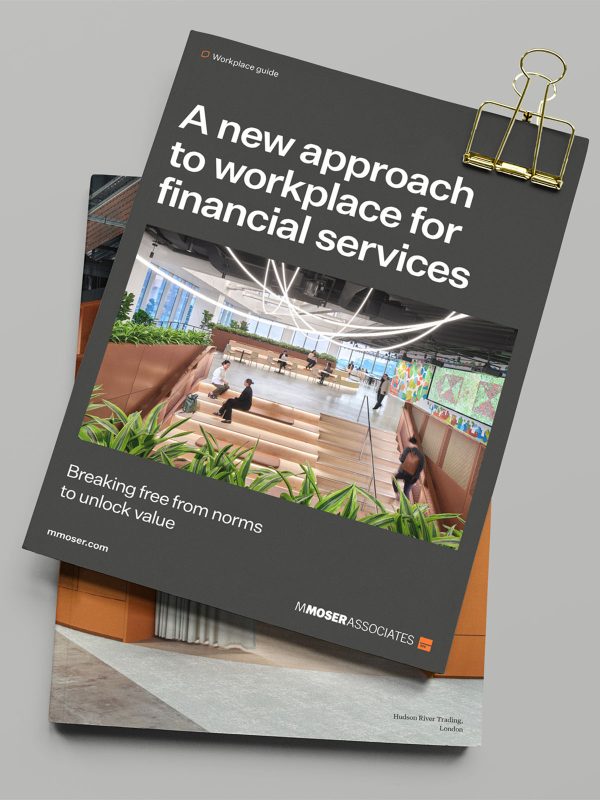
There are still widespread misconceptions about how financial services environments should function:
These assumptions limit both business performance and employee potential. Whether it’s financial advisor office design or accounting firm office design, today’s approach needs to reflect how people actually work, collaboratively, flexibly and across disciplines.
Many financial firms in New York face real, entrenched obstacles to change:
Risk sensitivity: With few tangible ROI metrics, it’s difficult to justify workplace change.
Legacy layouts: Static office plans hinder flexibility and cross-functional synergy.
Security anxieties: Data protection remains a top priority that often feels at odds with agility.
Wellbeing shortfalls: High-intensity environments demand proactive strategies to avoid burnout.
ESG integration gaps: Many firms are unsure how to embed sustainability into their financial office design.
Add to this the legacy mindset itself, some companies continue to cling to ‘the way it’s always been’ while others boldly redefine what’s next. In both cases, the need for intentional workplace evolution is clear.
Failing to overcome these hurdles can result in talent attrition, lower productivity and decreased competitiveness.
The tide is turning. Some firms are already making strategic design investments that prove change is not only possible, it’s essential. Consider HSBC’s new global headquarters at The Spiral, a project that sets a new benchmark for financial workplace design in New York and beyond.
Key features include:
Notably, HSBC downsized its total square footage but not its employee count. Instead of shrinking, it focused on optimizing space efficiency, performance and digital infrastructure to meet the needs of a modern, mobile workforce. This is a powerful example of how firms can do more with less while still scaling impact.
This model can inspire financial workplace design in New York, from wealth management office design to finance office design across multiple services.
Design evolution doesn’t mean erasing what works. It means intentionally evolving to create workplaces that support today’s realities and tomorrow’s goals. At M Moser, we partner with some of the largest financial firms in New York City, and globally, to transform workplace environments. Whether that’s designing agile accounting office spaces or redefining wealth management office design strategies.
As the demand for elevated, purpose-driven workplaces increases, we believe it’s time to shift from reactive planning to future-ready environments.
This shift also plays into the ‘flight to quality.’ As companies compete for talent and market influence, they are investing in elevated, amenity-rich workplaces that reflect their brand values and offer more than the basics.
Whether you’re exploring a new approach to accounting firm office design or upgrading your financial workplace design in New York, now is the time to act.
The next generation of financial services workplace isn’t about tradition or trend, it’s about creating strategic spaces that attract talent, adapt to business needs and reflect what the industry stands for.
Let’s redefine the future of financial office design, contact us to get started.